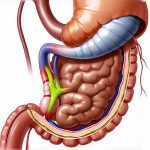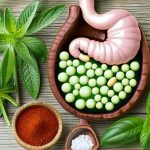Indigestion, also known as dyspepsia, is a common ailment affecting millions worldwide. It’s not a disease itself, but rather a collection of uncomfortable symptoms – bloating, heartburn, nausea, feeling full quickly, and stomach discomfort – that can significantly impact daily life. Many factors contribute to indigestion, ranging from dietary choices and lifestyle habits to underlying medical conditions. While over-the-counter remedies offer temporary relief, increasingly people are turning to dietary modifications as a sustainable long-term approach to manage their symptoms. A low-acid diet, focusing on foods that minimize stomach acid production or neutralize existing acid, can be a powerful tool in reducing indigestion and improving digestive comfort.
Understanding the relationship between food acidity and indigestion is crucial. It’s often not about avoiding acidic foods directly (like citrus fruits) as much as it’s about limiting foods that stimulate excessive acid production or irritate the stomach lining. The goal isn’t necessarily to eliminate all acids, but rather to balance your diet to minimize digestive distress. This involves identifying personal triggers – what sets off your indigestion – and tailoring a dietary approach that works best for you. It’s important to note that everyone reacts differently; a food that causes discomfort for one person might be perfectly tolerable for another. This guide will explore the principles of low-acid diets, offering practical tips and guidance on how to implement them effectively. If you are unsure about your symptoms, it may be time to ask your doctor for a full gut check.
Understanding Low-Acid Diets
A low-acid diet isn’t about eliminating acids entirely, it’s more a nuanced approach to managing digestive health by focusing on foods that are gentle on the stomach. The core principle is reducing stimulation of acid production and minimizing irritation of the gastrointestinal tract. This doesn’t necessarily mean avoiding all fruits or tomatoes (which contain acid), but rather understanding how different foods impact your individual digestion. Many people find relief simply by identifying their personal trigger foods and moderating or eliminating them.
The focus shifts toward incorporating more alkaline-forming foods, which can help neutralize stomach acid. These aren’t necessarily ‘anti-acid’ in the way a medication is, but rather contribute to a healthier overall digestive environment. Foods that are easily digestible and don’t require excessive stomach acid for breakdown are favored – think cooked vegetables, lean proteins, and whole grains prepared simply. It’s also about how foods are prepared – baking, steaming, or poaching are preferred over frying or adding spicy seasonings. Best cooking methods can make a huge difference!
Crucially, a low-acid diet isn’t always the solution for everyone experiencing indigestion. If your symptoms are severe or persistent, it is essential to consult with a healthcare professional to rule out underlying medical conditions like GERD (gastroesophageal reflux disease), ulcers, or food allergies. A registered dietitian can also help personalize a dietary plan tailored to your specific needs and sensitivities. You might even need a motility scan to get a clearer picture of what’s happening.
Identifying Trigger Foods
Pinpointing the foods that exacerbate your indigestion is arguably the most important step in implementing a successful low-acid diet. This requires mindful observation and potentially keeping a food diary. For several weeks, carefully record everything you eat and drink, along with any accompanying symptoms, their severity, and when they occur relative to meal times.
Here’s how to approach building your trigger food list:
1. Start broad: Begin by eliminating common culprits like caffeine, alcohol, chocolate, spicy foods, fatty foods, and carbonated beverages for a week or two.
2. Reintroduce systematically: Gradually reintroduce these foods one at a time, paying close attention to how your body responds. Introduce only one food every 3-4 days to accurately identify the source of any discomfort.
3. Be specific: Note not just the food itself, but also the quantity and preparation method. A small portion of tomato sauce might be tolerable, while a large bowl could trigger symptoms.
Common trigger foods often include: citrus fruits (oranges, grapefruit, lemons), tomatoes and tomato-based products, coffee, alcohol, chocolate, mint, carbonated beverages, spicy foods, fatty or fried foods, and highly processed foods. However, remember that these are just starting points; your individual triggers might differ. Don’t assume a food is off-limits forever – it may be possible to tolerate small amounts or certain preparations of trigger foods as your digestive system improves. Using test results can help refine this process.
Building Your Low-Acid Plate
Once you have a better understanding of your trigger foods, the next step is building meals around low-acid options. This doesn’t mean sacrificing flavor or enjoyment; it simply requires some creativity and mindful food choices. Focus on incorporating plenty of alkaline-forming foods to help balance pH levels in the digestive system.
Here are some guidelines for building your low-acid plate:
– Lean proteins: Chicken, turkey (skinless), fish (especially white fish like cod or haddock), tofu, and legumes (in moderation).
– Whole grains: Oatmeal, brown rice, quinoa, whole-wheat bread (choose varieties with minimal additives).
– Non-citrus fruits: Bananas, melons, pears, peaches, applesauce.
– Vegetables: Most vegetables are well-tolerated, but avoid those known to trigger symptoms for you (like onions or garlic if they bother you). Cooked vegetables are generally easier to digest than raw ones.
– Healthy fats: Avocado, olive oil.
Avoid overeating and eat smaller, more frequent meals throughout the day rather than large portions. Chew your food thoroughly to aid digestion and avoid eating close to bedtime. Hydration is also key – drink plenty of water throughout the day, but avoid drinking large amounts with meals as this can dilute stomach acid and hinder digestion.
Beyond Food: Lifestyle Factors
While diet plays a significant role in managing indigestion, it’s essential to consider other lifestyle factors that can contribute to symptoms. Stress, for example, is a major trigger for many people; finding healthy ways to manage stress – through exercise, meditation, or hobbies – can significantly improve digestive comfort.
Other important considerations include:
– Regular exercise: Promotes healthy digestion and reduces stress.
– Maintaining a healthy weight: Obesity can increase pressure on the stomach.
– Avoiding smoking: Smoking irritates the stomach lining.
– Limiting alcohol consumption: Alcohol stimulates acid production.
– Managing medications: Some medications can contribute to indigestion; discuss this with your doctor.
– Proper posture: Slouching can compress the abdomen and worsen symptoms.
It’s important to remember that a holistic approach – combining dietary changes with lifestyle modifications – is often the most effective way to manage indigestion long-term. Don’t underestimate the power of simple habits like taking deep breaths before meals or practicing mindful eating, which involves savoring your food and paying attention to hunger cues. If you are preparing for a holiday season, consider how to prepare for a GERD-friendly holiday. And remember, if you’re feeling overwhelmed by prepping for a digestive test, there are ways to make it easier!


















